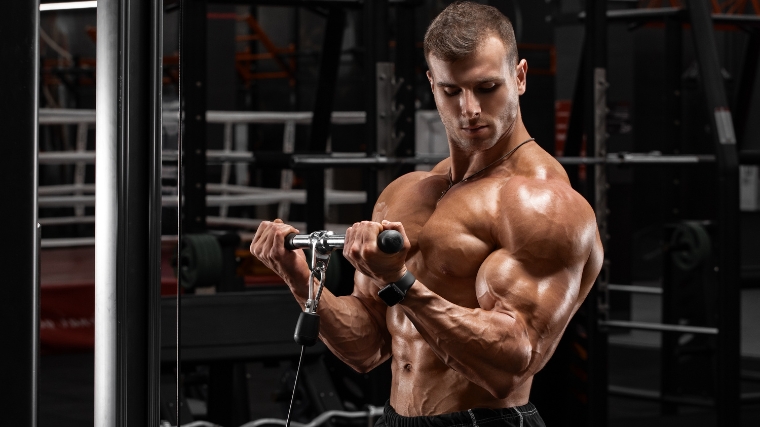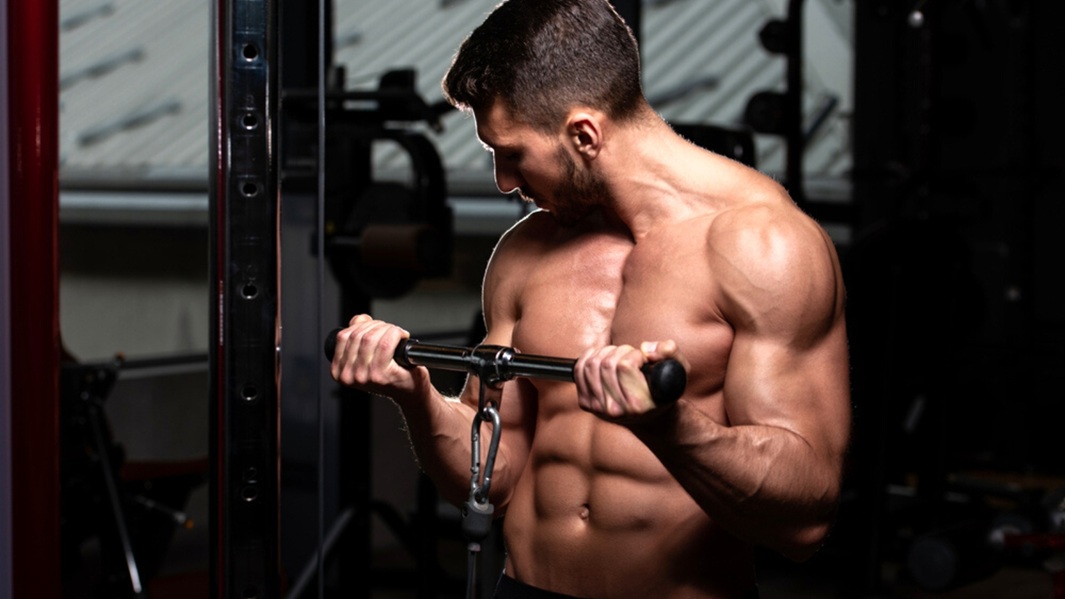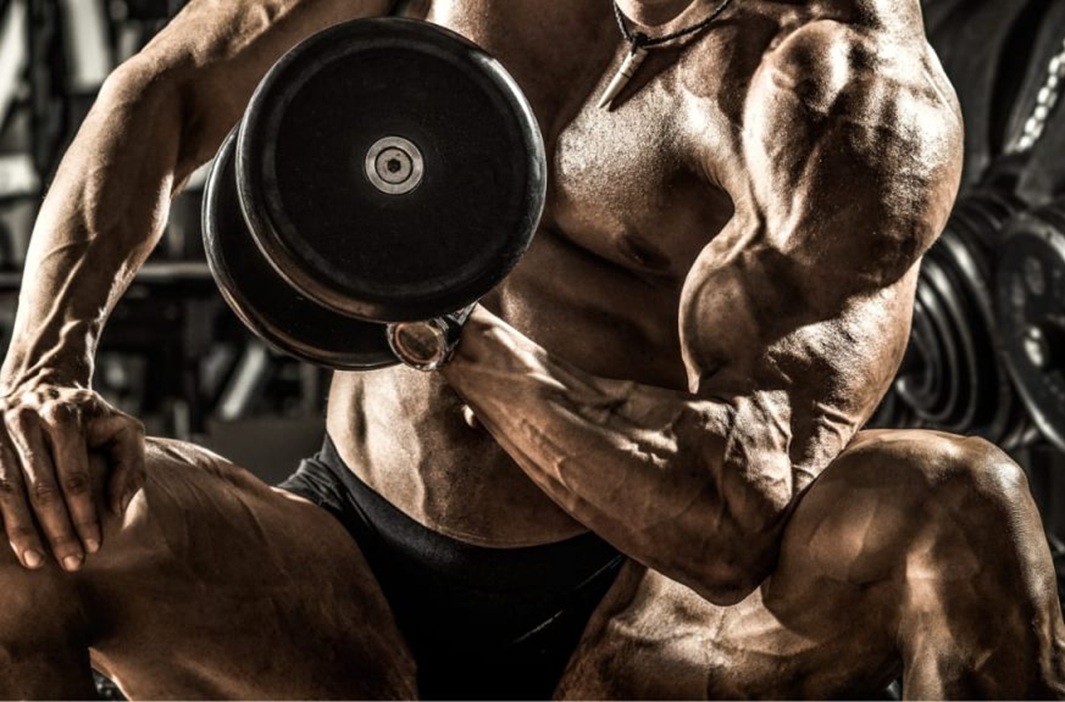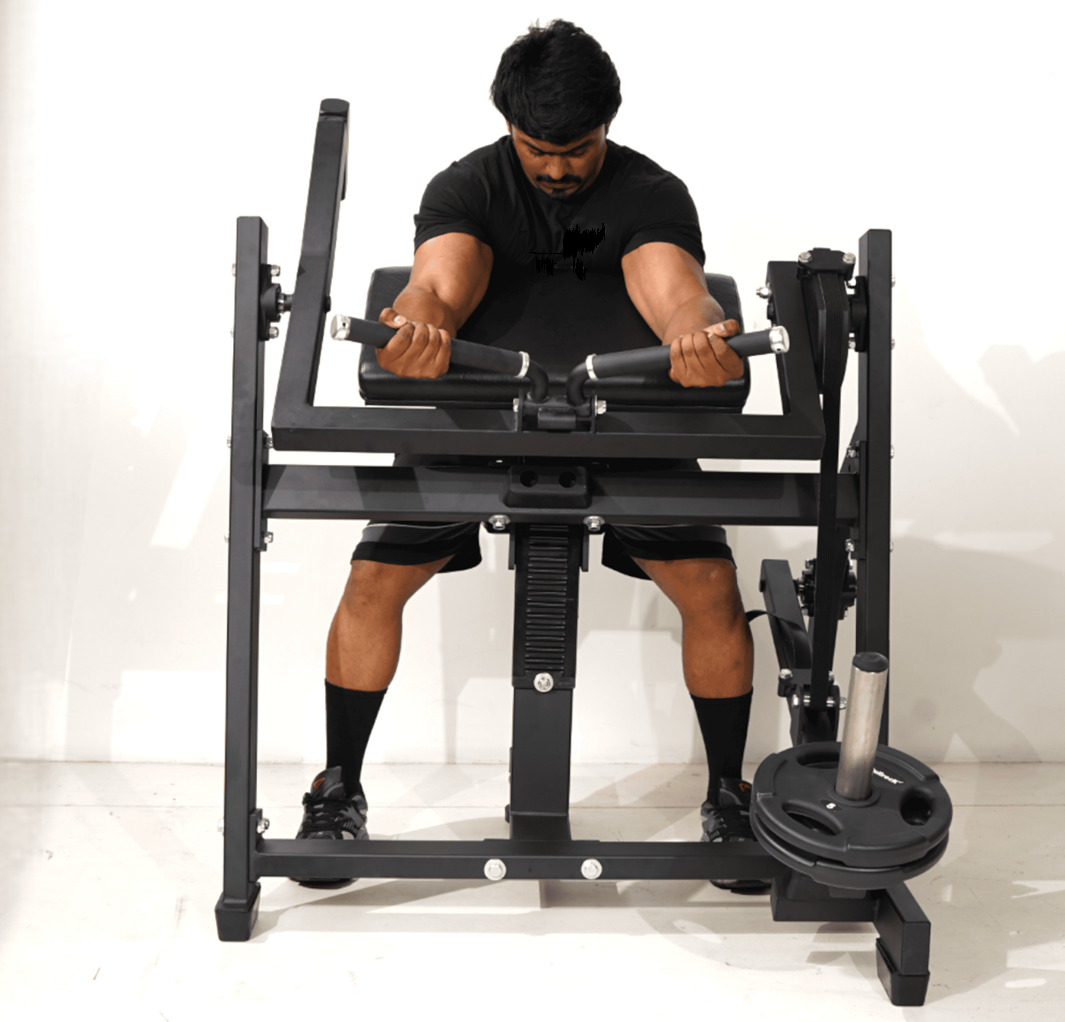Cable Curl: Constant Tension for Constant Growth
Few biceps exercises deliver the consistent muscle engagement of a Cable Curl. While barbell and dumbbell curls are foundational for building mass and strength, cable work adds something those can’t — continuous tension through the entire range of motion.
With free weights, tension drops off at the top of the curl. With cables, your biceps never get that break — they’re firing from start to finish.
That’s why advanced lifters and bodybuilders rely on cable curls to refine arm definition, amplify pump, and deepen the mind-muscle connection after heavy compound work.
Think of the cable curl as your precision tool — the exercise that turns raw mass into sculpted, round, camera-ready arms.
Whether you’re chasing pure aesthetics, balanced hypertrophy, or better arm control, cable curls deserve a dedicated place in your arm training program.
Muscles Worked
- Primary Muscle:
- Biceps brachii (short and long heads).
- Secondary Muscles:
- Brachialis — helps thicken the mid-arm.
- Brachioradialis — supports elbow flexion and forearm stability.
- Forearm flexors — assist with grip and control.
👉 The cable curl primarily hits the biceps short head (inner arm) when using a straight or EZ-bar attachment with a shoulder-width grip, but subtle changes in grip and angle can shift emphasis to different regions of the biceps.
Why Cable Curls Deserve a Spot in Every Program
- Constant Tension = Constant Growth
- Unlike free weights, there’s no point where gravity lets the muscle rest. Cables maintain load across every inch of the curl, leading to greater metabolic stress and hypertrophy.
- Superior Mind-Muscle Connection
- The smooth, resistance pattern lets you isolate the biceps without swinging or using momentum.
- Customizable Resistance Angles
- You can adjust pulley height, handle type, and stance to target specific heads of the biceps.
- Joint-Friendly Resistance Curve
- The consistent tension and controlled motion are easier on elbows and wrists than barbell curls.
- Perfect for Pump and Definition Work
- Great for finishing sets, drop sets, and supersets to fully exhaust the biceps at the end of a workout.
How to Perform the Standard Cable Curl (Step-by-Step)
Setup
- Attach a straight bar or EZ-bar handle to a low pulley on a cable stack.
- Stand facing the machine with feet shoulder-width apart.
- Grip the bar with palms facing up (supinated grip) and hands shoulder-width apart.
- Step back slightly to create light tension on the cable before starting.
- Keep your elbows close to your torso and your core tight.
Execution
- Begin with your arms fully extended and the bar near your thighs.
- Curl the bar upward by contracting your biceps — avoid swinging or using your shoulders.
- Keep your elbows pinned at your sides throughout the movement.
- Squeeze your biceps hard at the top for 1–2 seconds.
- Slowly lower the bar under control to the start position — feel the stretch at the bottom.
Breathing
- Exhale as you curl up.
- Inhale as you lower back down.
Tempo
- Concentric (lift): 1–2 seconds.
- Squeeze: 1 second.
- Eccentric (lower): 3 seconds.
Common Mistakes and How to Fix Them
- Using Too Much Weight
- Mistake: Leaning back or jerking the cable to start each rep.
- Fix: Reduce the load. The goal is to control the movement, not throw the weight.
- Elbows Moving Forward
- Mistake: Turning the curl into a shoulder flexion.
- Fix: Keep elbows locked at your sides. Only forearms should move.
- Half Reps
- Mistake: Not fully extending or contracting the biceps.
- Fix: Go through full range of motion — full stretch to full squeeze.
- Losing Tension at the Bottom
- Mistake: Letting the weight stack rest between reps.
- Fix: Keep slight tension at the bottom — never let the cable go slack.
- Speeding Through Reps
- Mistake: Treating it like a momentum exercise.
- Fix: Slow down the eccentric — it’s the growth phase.
Variations of the Cable Curl
- Single-Arm Cable Curl
- Attach a single D-handle and work one arm at a time.
- Promotes better mind-muscle connection and corrects imbalances.
- Rope Cable Curl
- Use a rope attachment and twist wrists outward at the top.
- Targets both heads of the biceps while enhancing forearm engagement.
- EZ-Bar Cable Curl
- Combines the comfort of the EZ-bar with cable resistance — joint-friendly and smooth.
- Reverse Cable Curl (Overhand Grip)
- Focuses on the brachialis and brachioradialis for thicker, stronger forearms.
- High Cable Curl (Crossover Style)
- Set both pulleys to shoulder height and curl toward your head — creates constant tension from a unique lateral angle.
- Behind-the-Back Cable Curl (Bayesian Curl)
- Step forward with the cable behind you and curl from a stretched position — excellent for long-head development.
Programming Guidelines
For Hypertrophy (Muscle Growth)
- Sets: 3–4
- Reps: 10–15
- Rest: 45–75 seconds
- Load: Moderate — enough resistance to maintain control and full tension.
For Pump and Finishing Work
- Sets: 2–3
- Reps: 15–20 (use lighter weight).
- Goal: Maximize blood flow and metabolic stress.
- Technique Tip: Try slow eccentrics or dropsets to push past fatigue.
For Strength / Density
- Sets: 3–5
- Reps: 6–8
- Rest: 90 seconds
- Goal: Build arm density and tendon resilience.
Integration in Training Splits
Example: Pull Day (Push/Pull/Legs Split)
- Barbell Row: 4×6
- Lat Pulldown: 4×10
- Dumbbell Curl: 3×10–12
- Cable Curl: 3×12–15 (finisher)
Example: Arm Day
- Barbell Curl: 4×8
- Incline Dumbbell Curl: 3×10
- Preacher Curl: 3×12
- Cable Curl (Rope or Single-Arm): 3×15 (pump set)
👉 Cable curls fit perfectly at the end of biceps sessions for maximum pump and definition work.
Bodybuilder’s Tips
- Control the line of tension. Adjust your distance from the cable machine to maintain smooth resistance.
- Stay upright. Keep your torso fixed; don’t sway or lean back.
- Squeeze harder than you think. Visualize the biceps shortening with every rep.
- Experiment with grips. Narrow grip = outer biceps, wide grip = inner biceps.
- Use as a finisher. After heavy curls, hit cable curls for volume and blood flow.
- Superset potential. Pair with triceps pushdowns for a high-intensity arm day pump.
Advanced Training Techniques
- 21s (Cable Edition)
- 7 bottom-half reps + 7 top-half reps + 7 full reps = one brutal set.
- Dropsets
- Reduce weight by 20–30% after failure and continue curling to extend time under tension.
- Slow Eccentrics
- 3–5 second lowering phase on every rep for deeper muscle fiber activation.
- Cable Curl Ladder
- Perform curls with both arms → single-arm left → single-arm right → back to both arms for one extended set.
Common Questions
Q: Are cable curls better than dumbbell curls?
A: Neither is “better” — they complement each other. Dumbbells challenge stabilizers and coordination; cables offer constant tension and precision. Together, they create a complete arm-training balance.
Q: Can cable curls build mass?
A: Absolutely. When performed with enough volume and intensity, cable curls can significantly contribute to biceps hypertrophy. They’re especially effective when combined with free-weight curls in the same session.
Q: How often should I do cable curls?
A: 1–2 times per week is ideal, depending on your arm training frequency. Overuse can lead to elbow irritation if volume is too high.
Practical Takeaways
- Cable curls keep your biceps under continuous tension, ideal for hypertrophy.
- Great for end-of-workout pump or as a secondary lift after heavy curls.
- Works in all training splits and can target different biceps regions by changing grip or pulley height.
- Emphasize form, tempo, and squeeze over load for best results.
- Combine with free-weight curls for full-spectrum biceps development.
Conclusion
The Cable Curl might not have the raw power appeal of a barbell curl, but for sculpting, shaping, and finishing your arms, it’s unrivaled.
The constant tension it provides forces your biceps to stay active from the first rep to the last, creating the kind of deep, skin-splitting pump that builds both size and definition.
If you’re serious about complete arm development, the cable station shouldn’t be an afterthought — it’s your refinement tool.
Use it to perfect what the heavy lifts built. Train with control, tension, and intent, and your biceps will not only grow — they’ll look more refined, balanced, and powerful.




